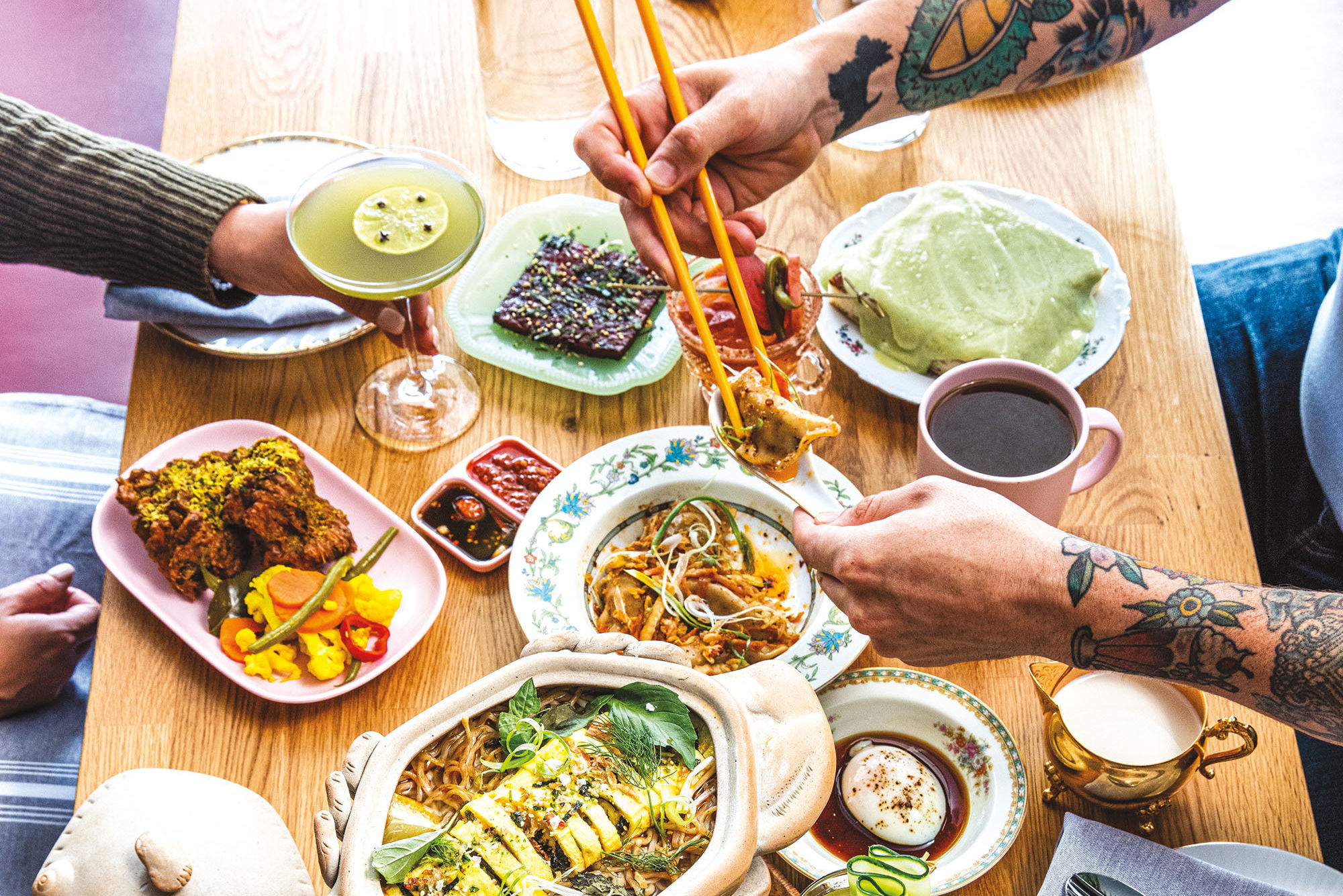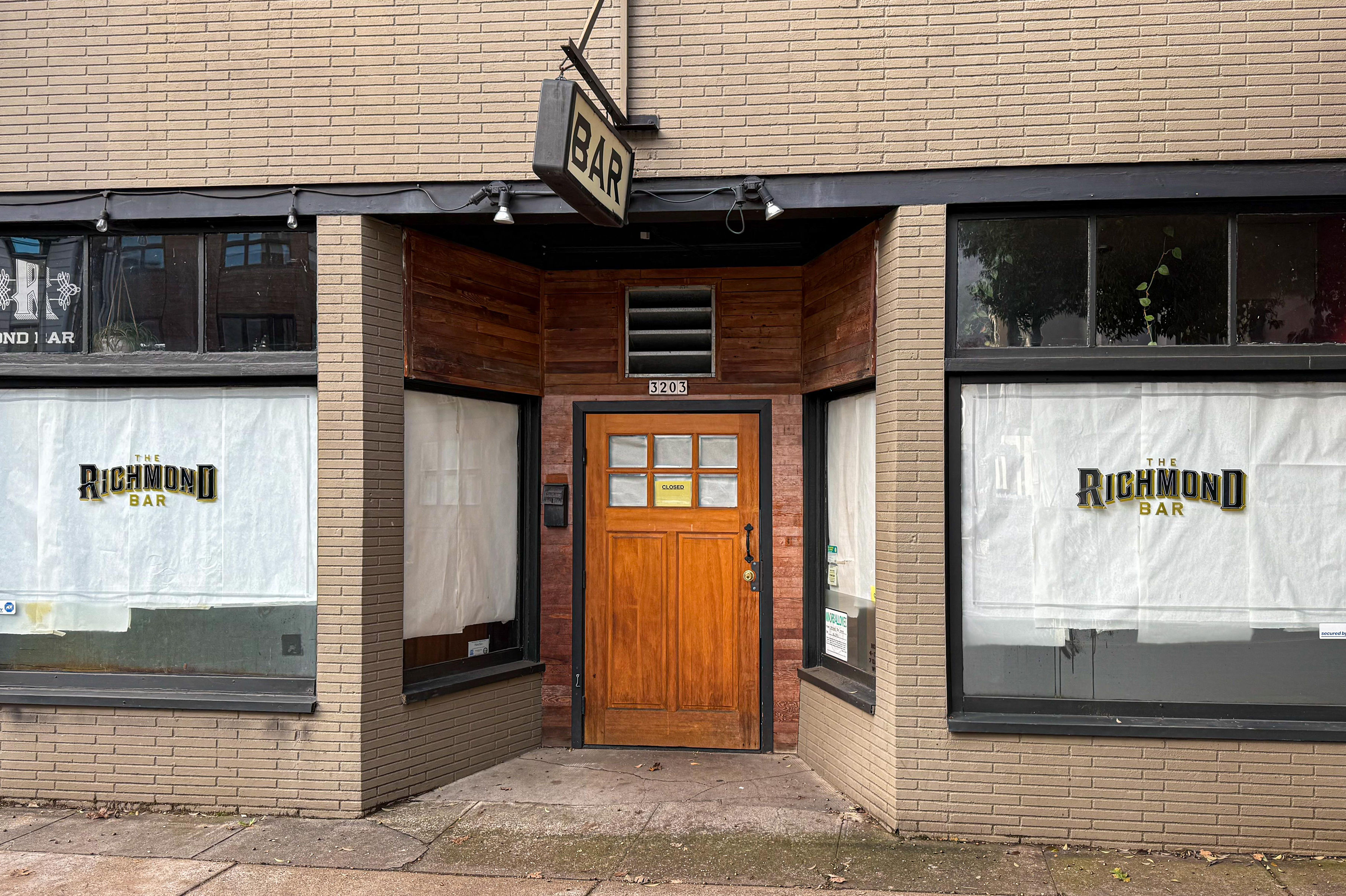Restaurants Can Now Reopen for Indoor Dining at 50% Capacity. But Will They?
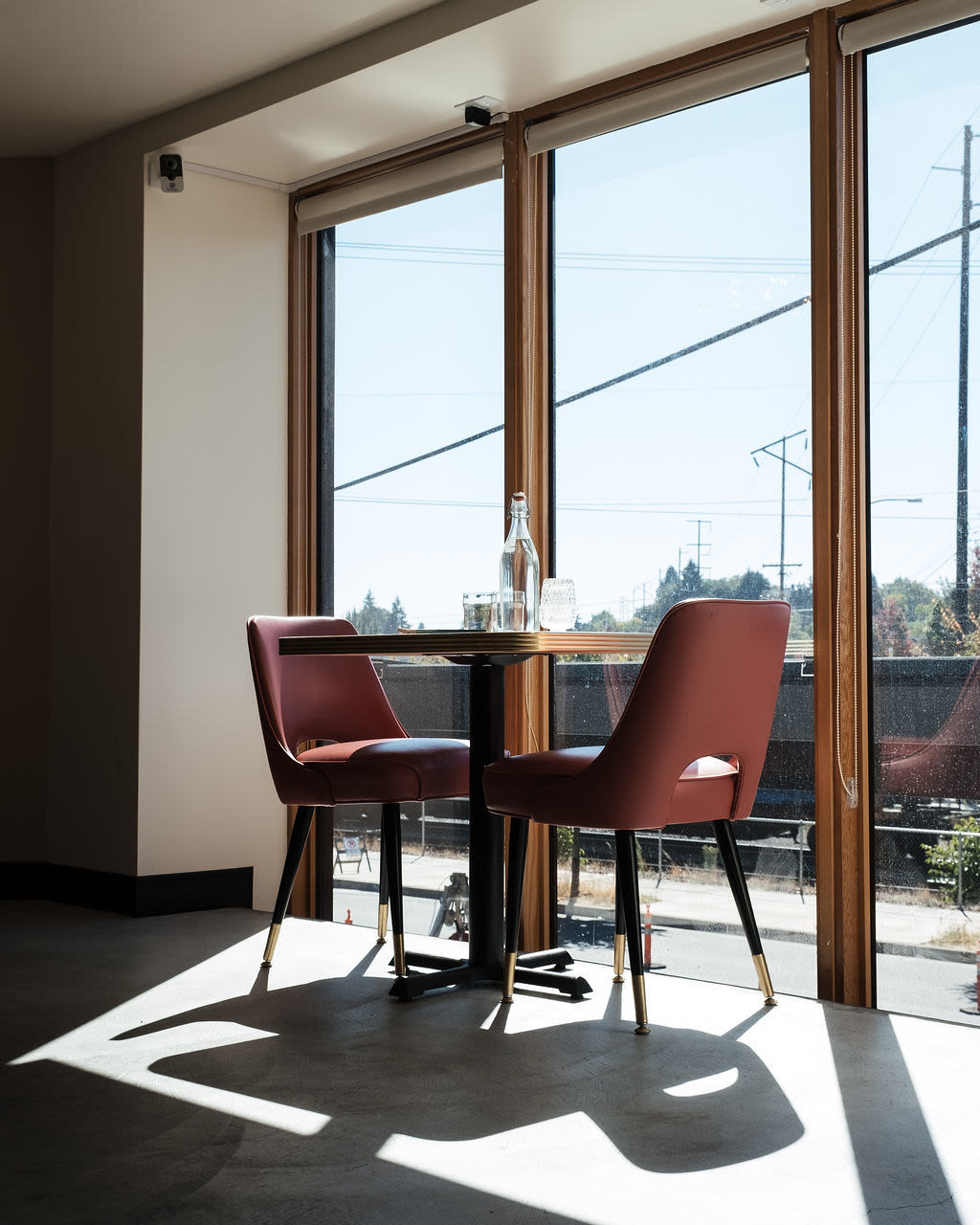
The dining room at Palomar
Image: Courtesy Jordan Hughes
As of today, March 12, Multnomah County has moved from the high risk category to the moderate risk category—which means, among other things, restaurants can now open for indoor dining at up to 50 percent of their original capacity, up from the 25 percent that was allowed under the previous tier starting February 12. But restaurant owners have had varying responses to the new allowances, with some opting to remain closed and others opting to reopen at half-capacity.
When Portland Monthly asked Gabriel Rucker, co-owner of Le Pigeon and Canard, if he planned to reopen for indoor dining at 25 percent capacity back in February, it didn’t take long for him to reach a conclusion: no. The restaurant had remained open for indoor dining during the summer and fall of 2020, but Rucker decided not to risk reopening a second time.
“I have been very blessed,” says Rucker, who has deployed a variety of strategies to survive the pandemic. “I’ve built up a loyal following. We can sell to-go food; I’m selling 34 Zoom cooking classes a week; we have a new project with our neighbors, the Jupiter Hotel. It’s not as easy, not as profitable. But I’m coming from a place where I think I can make it for now. I’m not rushing to open. I’m treating it like school—I want to get things to be more under control, to open for good. It costs a lot to open and shut; the mental toll is too great. I don’t want to go through that again. As long as I can do what I’m doing and make it work, I’m a happy guy. We're hoping that vaccines will be open to restaurant workers in early May, and that cases will continue to fall in MultCo and we can get back to doing what we love: putting food on plates and serving people.”
Mariah and Thomas Pisha-Duffly of Gado Gado have also decided to hold off on indoor dining for the time being, sticking with the restaurant’s adorably decorated, heated parking-lot patio. “I don't want to say we'll never open for indoor dining, but ... for right now, we're really happy with our patio setup. We don't want to rush into anything that doesn't feel right for our team,” says Mariah.
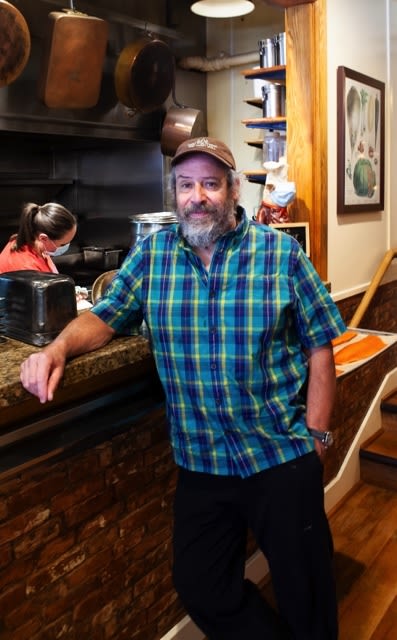
Greg Higgins at his pioneering farm-to-table restaurant, Higgins
Image: Courtesy Higgins
But for owners who don’t have funky, fun patios like Gado Gado or Instagram cooking class side hustles like Rucker, the decision gets a little more complicated. Greg Higgins, owner of Higgins Restaurant in downtown Portland, decided to reopen the restaurant at 25 percent capacity shortly after indoor dining returned in February, and plans to move to near 50 percent capacity under the new guidelines. The downtown restaurant has faced significant financial challenges with fewer office workers in the area, fewer tourists, and six window smashings over the past year. “We’re just trying to keep people employed,” Higgins says.
The restaurant spent a sizable amount on safety measures last fall—plexiglass tabletops that could easily be cleaned, HEPA filters in each room, and tables spaced 10 feet apart—but the shutdown of indoor dining last November meant that the restaurant saw little return on those investments. With operations limited to takeout, the restaurant brought in only 10 percent of the daily revenue it did prior to the pandemic. But even 50 percent capacity is no recipe for profit, Higgins says. “Nobody’s making money at 50 percent. We’re all hemorrhaging, and hopefully people will understand how important their [continued] support is.”
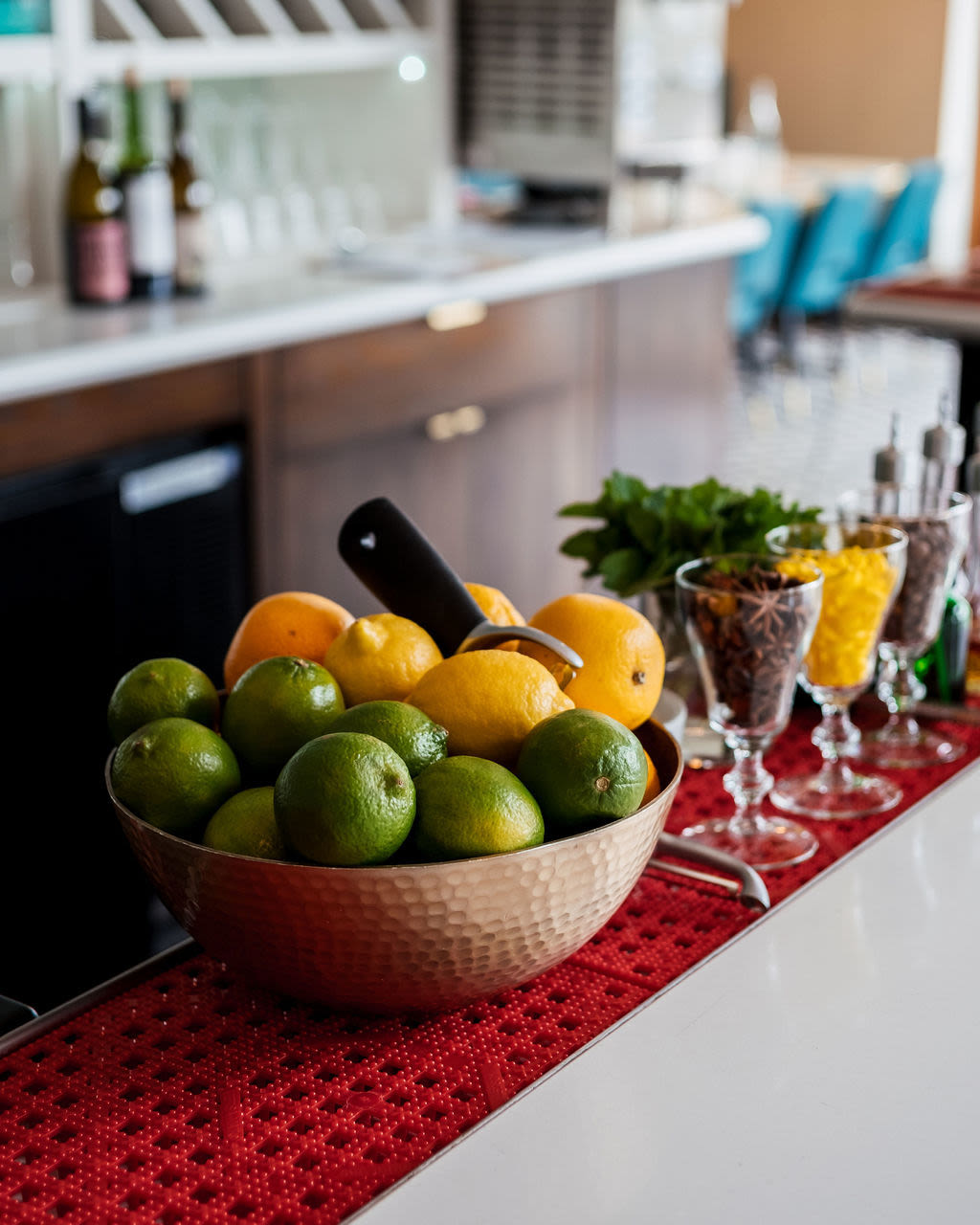
Cocktail garnishes at Palomar await guests.
Image: Courtesy Jordan Hughes
Ricky Gomez, owner of Cuban restaurant and daiquiri hot spot Palomar, had pivoted to offer rooftop dining over the summer in 2020, but moved everything indoors after the wildfires hit. Palomar was operating at 50 percent capacity starting in October 2020—and even managed to turn a little profit—until indoor dining was completely shut down in November. After a few weeks of complete closure, the restaurant pivoted to serve food to go, adding on takeout cocktails once they were legalized in late December. Business picked up with to-go cocktails, Gomez says—but once other restaurants started to open at 25 percent capacity in February, business at Palomar took a sharp dive. Gomez says that last weekend, he only received three orders on Friday and Saturday nights.
Gomez knew he wouldn’t be able to make any profit at 25 percent capacity, so Palomar subsisted from December through March on a slow trickle of takeout orders, likely limited by the fact that Gomez refuses to use any third-party delivery apps. (“If they continue to trend in the way they are, I think it's gonna put people out of business,” Gomez says.) But based on his numbers from last fall, Gomez knew he could at least break even at 50 percent capacity. When Palomar reopens for indoor dining today, March 12, it will be the third time since March 2020 the restaurant has reopened for on-site service.
“Once we knew [50 percent capacity] was possibly coming down the pipeline, I contacted all the staff members who we'd be bringing back, and made sure they felt comfortable coming back, and made sure they wanted to come back, and had everybody individually decide what they wanted to do,” Gomez says.
All six of the staff he was able to rehire decided to return—up from his bare-bones staff of himself and a chef back in the fall—with safety measure in place including two HEPA filters, more than six feet of spacing between tables, and large bay windows that are opened whenever weather permits.
But as more restaurants reopen for indoor dining, there’s still a lingering question: will their dining rooms have to close again?
“This is the third time we’ve done this, so [the cost] is definitely lowered, because now we know how to close. We know how to preserve proteins better, our stock levels have gotten better. So the waste has gone down quite a bit because we just know that this can happen again, and we take the precautions to do that.” Gomez says. But overall, his message is optimistic.
“We hope things continue to go in the right direction. With vaccinations and the governor putting the service industry on the schedule for May 1, that’s going to be real close ... I’m hoping that May 1 date gets moved up even further.... These are all good signs of things recovering and us moving in the right direction.”

